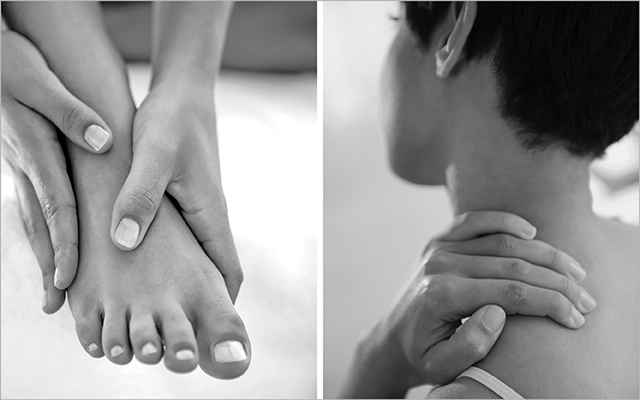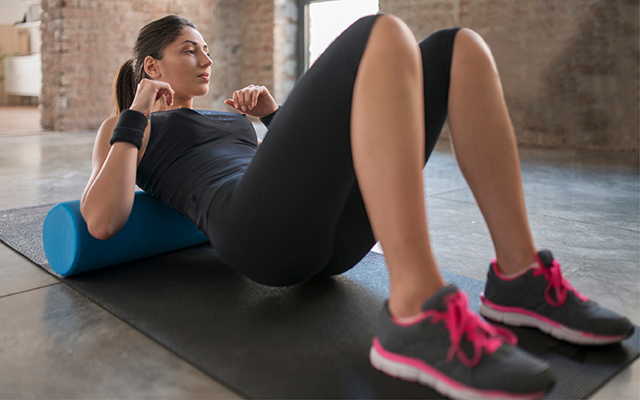DO stay away from intense pain. “Massage doesn’t have to hurt in order for it to work. Less can actually be a lot more,” says fitness therapist Jill Miller.
DO mix it up. Vary your tools and technique, advises corrective-exercise therapist Anthony Carey. Try moving up and down, and side to side; alternate broad and short strokes, with sustained pressure. When working with fascia, “speed is the enemy of depth,” says integrative manual therapist Thomas Myers, so move slowly and deliberately for best results.
DO match your tool to your target area, suggests physical therapist John Rusin. Use smaller tools to home in on smaller muscles (a lacrosse ball for the calves, for instance) and reserve large implements like a full-size foam roller for larger areas (like the upper back).
DO keep moving. “Move your body while you apply pressure to areas with tension,” says massage therapist Trisha Haws. “For example, if you’re working on your feet, rotate, flex, and extend your ankle as you address trigger points.”
DON’T massage the site of an acute injury, such as a sprain or strain. Also, avoid rolling directly where you feel pain, as this may increase inflammation.
DON’T spend a long time working on the same spot, because you could cause damage to tissue or nerves.
DON’T shrug off the power of professional bodywork. Receiving physical care from a trained expert who has an in-depth understanding of anatomy and technique can be extremely beneficial, so don’t be afraid to seek out the extra help.
This originally appeared as “Be Your Own Massage Therapist” in the December 2017 print issue of Experience Life.




This Post Has 0 Comments